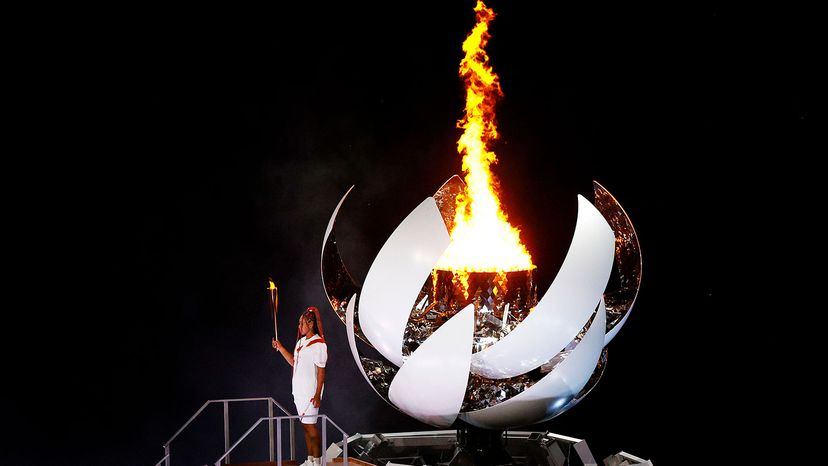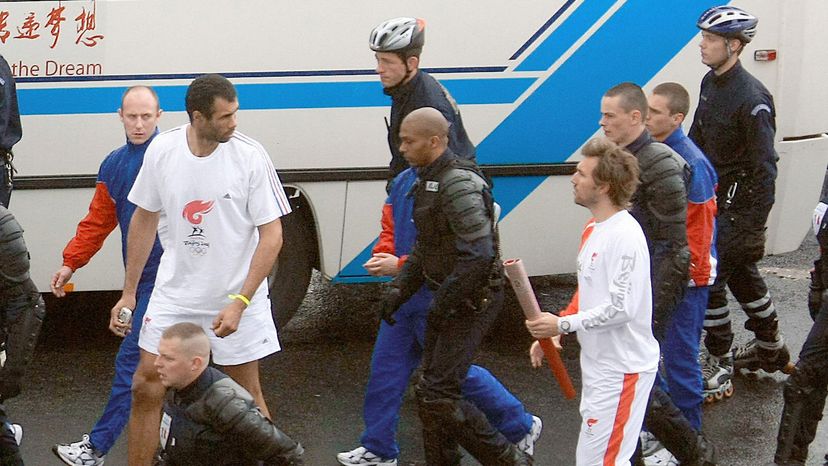
The ignition and transportation of the Olympic torch is an involved bit of pomp and circumstance. Take for example what happened at the Rio Games. Symbolizing the link between the ancient and modern Olympic games, the flame was ignited back in April 2016 at the Temple of Hera in Olympia, Greece, by an actress dressed as the high priestess of the Vestal Virgins. She said a prayer to Apollo and Zeus and kindled the flame using the rays of the sun concentrated in a parabolic mirror.
The Vestal Virgins danced, speeches were given, one of the virgins released a dove, and the high priestess lit the torch of the first runner in the relay, world champion Greek gymnast Lefteris Petrounias. Then the Olympic flame made its way by airplane across the ocean in a lamp, and by the time the flame reached its opening-ceremonies cauldron in Rio de Janeiro, it had been carried by 12,000 different runners. It burned there until it was extinguished Aug. 21, 2016, during the closing ceremonies.
Advertisement
The Tokyo ceremonies have been different because of the COVID-19 pandemic. The flame was lit in Olympia March 12, 2020, at a ceremony with no spectators. There was no relay from Greece. The flame was then taken to Japan, but two days before the relay was supposed to begin, it was announced that the games would be postponed until 2021. (The torch was kept lit for a year, mostly at the Olympic Museum in Tokyo.)
Finally in March 2021, the torch began to travel in relay around Japan, but not in the usual manner. There were no crowds and instead of people running 200 yards (183 meters) and lighting their torch from the flame of the person who ran before them, organizers decided that the torch bearers should stand in separate areas and pass the flame via a "torch kiss." "The flame would barely move before being transported — in an undisclosed manner, though not by runner — to the next location in Tokyo for a similar event. Forget the cheering crowds. The action would be streamed online," reported the Wall Street Journal.
The passing of the Olympic flame from its birthplace in Greece to wherever the games are being held in a given year is obviously a big deal, and involves serious logistics. The torches carried by the runners are specially made to burn with a large, visible yellow flame that's easily photographed, as well as a smaller, hotter white flame that's not as easily blown out. But sometimes life doesn't go the way we plan — what happens if the flame does accidentally go out?
The short answer is, despite the torch's 24/7 security detail, it's not uncommon for the flame to be extinguished due to weather, torch malfunction, or humans doing human stuff (i.e., protesting or just goofing around). However, the International Olympic Committee (IOC) keeps backup lanterns on hand that were lit from the same flame as the Olympic torch at the original ceremony back in Olympia. The IOC has a protocol in place for relighting an extinguished torch.
"I experienced that problem myself in the torch relay for the 2004 Athens Games," said Tony Bijkerk, secretary-general of the International Society of Olympic Historians (ISOH), when we spoke to him in 2016. "During my 400 meters run, I twice passed a crossing where the wind came hard from the side. It blew out the flame, so I had to stop to receive a replacement torch from the car behind me carrying the mother lamp. The second time, I got the original torch back, lit again from the mother lamp in the car."
According to Bijkerk, the mother lamp is kept in the car that trails the relay runners is much like a mining lamp used in the old coal mines. With its own security retinue, a message of peace and cooperation, and a mother lamp never far away, what could go wrong?
Oh, lots. In 2016, two unsuccessful attempts were made by bystanders to extinguish the torch, one with a bucket of water and the other with a fire extinguisher. Back in 2008, the torch relay through Paris for the Beijing Olympic Games was protested due to Communist China's treatment of Tibet, and the torch was extinguished and relit no fewer than three times, although French officials claim it was more like five.

The 1976 Montreal Summer Games was one of most disorganized in Olympics history — due to a construction strike, the roof of the Olympic Stadium wasn't finished by the time the games began. When the flame in the cauldron was doused by a rainstorm and a backup nowhere to be found, a well-meaning security guard relit it with his lighter. When the IOC found out about this, they doused the tainted flame and relit it using one of the backup lamps.
The Olympic flame will be kept alive in Tokyo until the end of the games on Sunday August 8, 2021. Then it will start its journey toward Paris, home of the 2024 Olymics.
Advertisement


